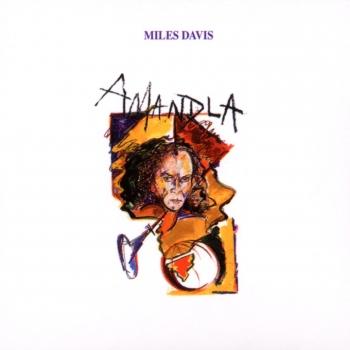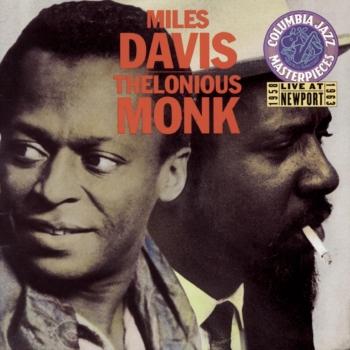
Miles at The Fillmore: Miles Davis 1970: The Bootleg Series, Vol. 3 Miles Davis
Album info
Album-Release:
1970
HRA-Release:
11.07.2015
Album including Album cover
I`m sorry!
Dear HIGHRESAUDIO Visitor,
due to territorial constraints and also different releases dates in each country you currently can`t purchase this album. We are updating our release dates twice a week. So, please feel free to check from time-to-time, if the album is available for your country.
We suggest, that you bookmark the album and use our Short List function.
Thank you for your understanding and patience.
Yours sincerely, HIGHRESAUDIO
- Disc 1: Live at Fillmore East June 17, 1970:
- 1 Introduction 00:04
- 2 Directions 10:24
- 3 The Mask 11:04
- 4 It's About That Time 10:45
- 5 Bitches Brew 13:41
- 6 The Theme 00:36
- 7 Paraphernalia 11:02
- 8 Footprints 11:13
- Disc 2: Live at Fillmore East June 18, 1970:
- 9 Directions 10:10
- 10 The Mask 11:30
- 11 It's About That Time 12:04
- 12 Bitches Brew 11:57
- 13 The Theme 01:30
- 14 Spanish Key (Encore) 10:20
- 15 The Theme (Encore) 00:28
- Disc 3: Live at Fillmore East June 19, 1970:
- 16 Directions 12:50
- 17 The Mask 10:00
- 18 It's About That Time 11:28
- 19 I Fall in Love Too Easily 01:48
- 20 Sanctuary 03:25
- 21 Bitches Brew 12:38
- 22 The Theme 00:38
- 23 Miles Runs the Voodoo Down 13:20
- Disc 4: Live at Fillmore East June 20, 1970:
- 24 Directions 10:48
- 25 The Mask 11:15
- 26 It's About That Time 11:04
- 27 I Fall in Love Too Easily 01:21
- 28 Sanctuary 03:21
- 29 Bitches Brew 09:39
- 30 Willie Nelson 09:22
- 31 The Theme 00:37
Info for Miles at The Fillmore: Miles Davis 1970: The Bootleg Series, Vol. 3
August 1969 to August 1970 was the most productive year of Miles Davis's career: in that short span of time, the trumpeter recorded enough material for his studio double-album Bitches Brew, a studio single album Jack Johnson, three sides of another studio double-album Big Fun, four tracks from the double-album Live-Evil...
... AND, across five nights at Bill Graham's famed Fillmore rock palaces in April and June of 1970, coast-to-coast at both the Fillmore East & West the complete, legendary concerts that will now see the light of day and be made available to fans in their entirety! MILES AT THE FILLMORE Miles Davis 1970: The Bootleg Series Vol. 3.
The searing white heat of these concerts, originally issued in severely edited form to accommodate LP sides, and without any track or song indications (e.g., "Wednesday Miles", "Thursday Miles, etc.") are now made whole. The additional 135 minutes of music in this set include a range spanning Wayne Shorter's Paraphernalia and Footprints from the earlier acoustic repertoire; to an early version of "Miles Runs The Voodoo Down" plus a RARE encore performance of "Spanish Key," compelled by the lightning-fast success of Miles's landmark studio album Bitches Brew.
This unprecedented collection tells a compelling story through its electrifying music, images, and cultural impact! In a rare, in-depth interview for art magazine Zygote II Zygote, which will be reprinted for this set, Miles--while listening to the concert playback--was "so excited about the music that he wanted every set, every note made available to the public..."
The visionary Bill Graham had booked Miles on a bill with The Grateful Dead at the Fillmore West at the April 1970 shows, and with fellow Columbia artist Laura Nyro in June 1970 at the Fillmore East run. The June shows are the earliest documented live performances of Miles s band when he hired two keyboardists--Chick Corea, and Keith Jarrett, who had been added to the band the previous month, along with saxophonist Steve Grossman who had replaced Wayne Shorter in March. The rest of the rhythm section--keyboardist Corea, bassist Dave Holland, drummer Jack DeJohnette and percussionist Airto Moreira--were in the backbone of this band throughout this explosive period.
"Miles Davis' trumpet is very much the focus, and his tone was strong and forceful and could easily cut through the electronic din." (Pitchfork)
Produced by Steve Berkowitz, Michael Cuscuna, Richard Seidel
Digitally remastered
Trumpeter Miles Davis grew up in East St. Louis, Illinois, just across the river from St. Louis, Missouri. His parents were affluent, and had the means to support his musical studies as a boy. He began playing the cornet at age nine, and received his first trumpet at around twelve or thirteen. He studied classical technique, and focused mainly on using a rich, clear tone, something that helped define his sound in later years.
As a teenager, he played in various bands in St. Louis, which was rich with jazz, as big bands often stopped there on tours throughout the Midwest and southern states. The most important experience he had was when he was asked to play in the Billy Eckstine band for a week as a substitute. The group included Charlie Parker, Dizzy Gillespie, and Sara Vaughan. After playing with these stars, Davis knew he had to move to New York to be at the heart of the jazz scene.
In Pursuit of Parker:
In 1944 Davis moved to New York City where he had earned a scholarship to study trumpet at the Juilliard School of Music. Upon arriving however, he sought after Charlie Parker, and meanwhile spent all of his time in jazz clubs listening to bebop. He was transfixed on the music, and grew utterly bored with his classical studies. After less than a year at Juilliard, he dropped out and tried his hand at performing jazz.
Although not particularly stunning, his playing was good enough to finally attract Charlie Parker, and Davis joined his quintet in 1945. He was often criticized for sounding inexperienced, and was compared unfavorably to Dizzy Gillespie and Fats Navarro, who were the leading trumpeters at the time. Both boasted stellar technique and range, neither of which Davis possessed. In spite of this, he made a lasting impression on those who heard him, and his career was soon set aloft.
Cool Jazz and a Rise to Fame:
Encouraged by composer and arranger Gil Evans, Davis formed a group in 1949 that consisted of nine musicians, including Lee Konitz and Gerry Mulligan. The group was larger than most bebop ensembles, and featured more detailed arrangements. The music was characterized by a more subdued mood than earlier styles, and came to be known as cool jazz. In 1949 Davis released the album Birth of the Cool (Captiol Records).
Change of artistic direction became central to Davis’ long and increasingly influential career. After dabbling in hard bop as a leader on four Prestige recordings featuring John Coltrane, he signed with Columbia records and made albums that featured Gil Evans’ arrangements for 19-piece orchestra. These were Miles Ahead, Porgy and Bess, Sketches of Spain, and Quiet Nights. He rose in popularity with these recordings, in part due to his signature sound, which he often enhanced by using a Harmon mute.
Kind of Blue and Beyond:
In 1959 Davis made his pivotal recording, Kind of Blue. It was a departure from all of his previous projects, abandoning complicated melodies for tunes that were sometimes only composed of two chords. This style became known as modal jazz, and it allows the soloist expressive freedom since he does not have to negotiate complex harmonies. Kind of Blue also featured John Coltrane, Cannonball Adderley, and Bill Evans. The album is one of the most influential in jazz, and is Columbia Records’ best-selling jazz record of all time.
In the mid 1960s Davis changed directions again, forming a group with Herbie Hancock, Wayne Shorter, Tony Williams, and Ron Carter. This group was known for the excellence of each individual member, and also for its unique performance approach. Each night the tunes would sound different, as the musicians would sometimes only loosely adhere to the song structures, and often transition from one right into the next. Each player was given the chance to develop his solos extensively. Like all of Davis’ previous groups, this quintet was highly influential.
Late Career:
Despite health problems, drug addiction, and strained personal relationships, Davis continued to play, changing his approach with each new project. In the late 60s and 70s, he began to experiment with electronic instruments, and grooves that were tinged with rock and funk music. Two famous recordings from this period are In a Silent Way and Bitches Brew. By the time the 1980s rolled around, Davis was not only a jazz legacy, but a pop icon, whose music, persona, and fashion style were legendary.
Davis died in 1991, as perhaps the most influential jazz artist ever. His vast body of work continues to be a source of inspiration for today’s musicians. (Jacob Teichroew, About.com Guide)
This album contains no booklet.






































